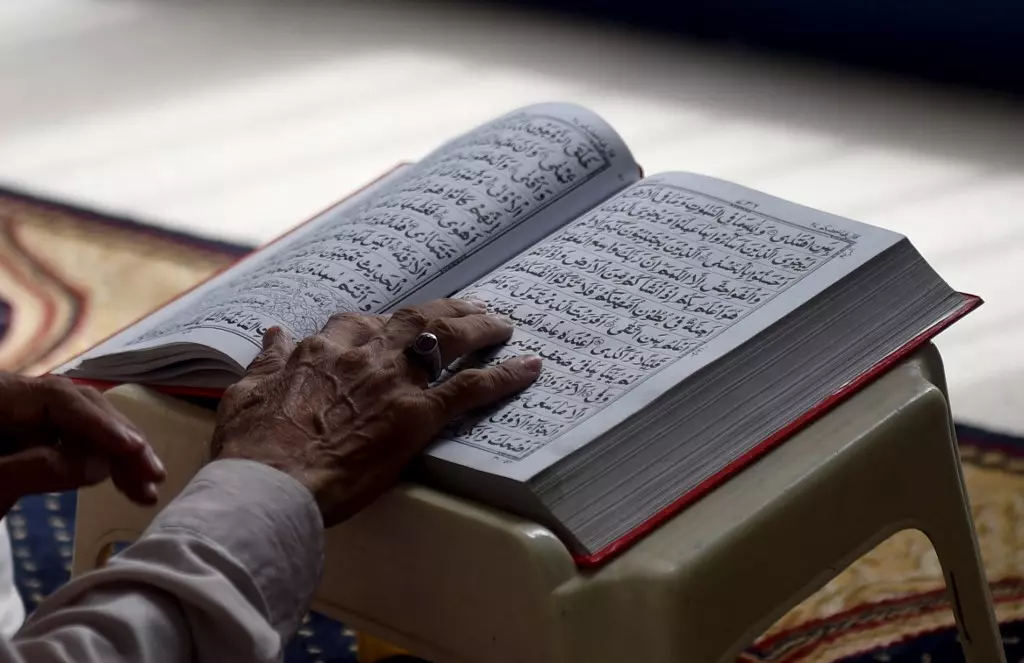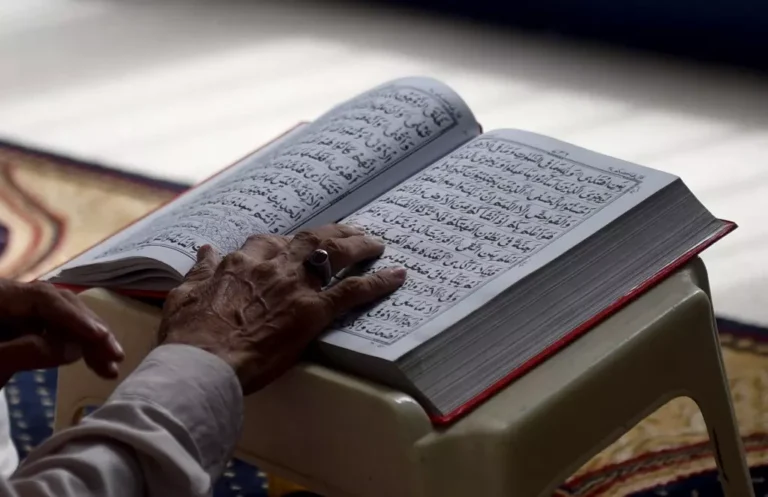Madd refers to the elongation of vowel sounds in Arabic, crucial for Quranic recitation. It includes Madd Asli (natural) and Madd Far’i (secondary), which further divides into categories like Madd Lazim, Madd Jaiz, Madd Mutasil, and Madd Muntasir, each with specific rules for proper pronunciation.
The Holy Quran, sent down to Prophet Muhammad (PBUH), is the book of Allah that He SWT revealed as a perfect source of legislation for humankind to live a great life. Being highly important, Quran must be read and recited correctly and clearly, so as not to form any kind of confusion or misunderstanding whatsoever. For proper recitation, it is important for the readers to follow Tajweed rules, which also include the types of Madd (extending the sound of a vowel). And there is so much more about madd than just this literal meaning.
So, if you have questions in mind like how many types of madd are there, what is yaa madd, what is normal madd, what is madd far ee, or what is madd laazim, you have landed on the right post. In this post, we discuss the different types of Madd and their examples in detail. But before moving to the types, let’s learn about madd closely.
Table of Contents
Madd in Quran
What is Madd in Quran? In Quran, Madd indicates a prolonged vowel and occurs over ant long vowel.
What is madda in Arabic? In Arabic, it means prolongation (stretch) if the voice with the letter from the letters of Madd. This means to extend the pronunciation of the letter like the following examples:
- غفور – It is one of the names of Allah SWT, which means forgiving, and (و) is the place of madd.
- السماء – It is an Arabic word, which means the sky, and (ا) is the place of madd.
- رحيم – It is one of the names of Allah SWR, which means merciful, and (ي) is the place of madd.
It was narrated that Qatadah said: “I asked Anas: ‘How did the Messenger of Allah (PBUH) recite Quran?’ He replied: ‘Prophet Muhammad (PBUH) used to elongate the sounds.” [Sunan An-Nasa’i]
Letters of Madd
Now, what are the 3 Madd letters? Al-Madd in Tajweed comes with three letters (ا , و , ي) and they are collected in the Arabic word نُوحِيهَا. These letters must be silent without any vowel on them, but the letter which appears before the letter of Madd must not be hamza. Also, the letter must have a vowel that depends on the letter of Madd, as follows:
- If the letter of madd is Alif (ا), the letter before must have a fatha sign, and Alif itself remains silent without any vowel.
- If the letter of madd is Waaw (و), the letter before must have a dammah, and Waaw remains silent without any vowel.
- If the madd letter is Yaa’ (ي), the letter before must have a kasra, and the Yaa’ itself remains silent without any vowel.
Note that the letter before the letter of madd must have the mentioned vowels, or else madd is not applicable, and the letter is not called the madd letter. So, if the madd letter is Waaw, and the letter before has the fatha sign in place of dammah, madd will not be applied, and Waaw will not be a letter of madd in this instance.
For example, in the word يومكم, which means your day in English, you can see the letter Yaa’ has a fatha sign, and the next letter Waaw is not the letter of madd. So, madd will not be applied here.
The letter of madd must remain silent without any vowel, and this doesn’t mean that it has a sukoon. If the letter of Madd has Sukoon, so Al-Madd is not applied. In another word أولئك, which means they are in English, you can observe the letter (أ) is an Alif that has dammah and is followed by the letter (و) with sukoon. Therefore, Madd is not applied here, and it is not the letter of Madd. And we utter it as أولئك. Also, in this word, the letter ل has fat-ha and is followed by ا, which has no vowel.
Types of Madd in Tajweed

What are the 2 types of madd? The two main types of madd are:
- Madd Asli/Tabi’y (Natural Madd)
- Madd Far’ee (Secondary Madd)
Madd Far’ee includes subtypes like Madd Lazim, Madd Jaiz, Madd Mutasil, and Madd Muntasir, each differing in conditions and duration of elongation.


Let’s Discuss them in more details:
Madd Asli
Definition
A letter cannot exist without this type of madd. It occurs when any of the three madd letters is preceded by hamza or sukoon.
Length
Two harakahs – A harakah is the duration of opening one of the fingers after making the closed fist, and two harakahs is the time it takes to open two fingers, one after another.
Reason for Name
- It is called madd asli as it has no causes for secondary madd, has a natural place as compared to other types of madd in Arabic, has a single form, i.e., the duration of only two harakahs, and the entity of the letter of madd is only said by pronouncing the madd itself.
- It is called madd tabee (natural) as a person naturally lengthens it for only two harakahs, neither more nor less than this.
Madd Asli Includes:
- The five alphabets mentioned separately at the start of some verses. These alphabets take the form of two letters, the second of which is the letter of madd. The letters can be found in the two words of حَي ٌ طَهُر. Madd asli examples are قَالَ – أَمْثَالُكُمْ – أَعْمَالُهُمْ وَقَالُوا – لِإِيلافِ – الْعَزِيزِ الْحَكِيمِ وَقِيْلَ – تُبْصِرُوْنَ – يُوْسُفُ – بُوْرِكَ – يُوْصِيْكُمُ – خَالِدِيْنَ
- Alif that is changed from the tanween that has a fat-ha like عَلِيمًا ِحَكِيمًا
- Alif with rectangular sukoon on it like:
- أنا whenever it appears in Quran
- لكنا in Al Kahf
- ( ِ أَنَا ِنَذِيرٌ ), ِ(لَكِنَّا ِهُو َ ِاللَّ َّ ُ ِرَ بِي),(الظُّنُونَاْ), ِ(الرَّ سُولا), ِ(السَّبِيلا)
Madd Faree
Definition
It is the type of madd which is added to madd asli for a certain reason.
Causes
Here are the two causes of the madd faree:
- Incorporeal. It is called this for where it has to do with the meaning. This doesn’t occur in the Hafs recitation reported from the Al-Shatibiyyah way. Still, it is permitted in some ways of Tayyibat Al-Nashr.
- Lexical. It is called this because a certain letter leads to the lengthening of the madd faree more than the madd asli.
Types of Madd Faree
- Madds due to a hamza
- Madd Muttasil (Attached lengthening)
- When hamza appears in the same word after the letter of madd
- Its duration is four Alifs (seconds)
- Madd muttasil examples: جَاءَ, هَنِيئًا, قُرُ وءِ
- Madd Munfasil (Separated lengthening)
- When one word ends with the letter of madd and the following word begins with hamza
- Its duration is three Alifs (seconds)
- Madd munfasil examples: قُوا ِأَنْفُسَكُم ْ ِوَ أَهْلِيكُم ْ ِنَارً ا إِنَّا ِأَعْطَيْنَاك َ ِالْكَوْ ثَرَ, ِ
- Madd Badal (Exchange lengthening)
- When the letter of madd (lengthening) is preceded by hamza within the same word, but it should not be followed by either hamza or sukoon
- Madd badal examples: ءامِ نُوا, إِيمَانًا, أُوتُوا
- Madd Muttasil (Attached lengthening)
- Madds due to a sukoon
- Madd ‘Arid lil-sukun (Lengthening because of the sukoon from pausing on it)
- When after the letter of madd, there is saakin caused by a waqf
- Its duration is one Alif (second), three Alifs (seconds), or five Alifs (seconds)
- Madd arid lil-sukun examples: الْعَالَمِ ينَ, الْمُفْلِحُونَ
- Al-madd Lazim (Important lengthening)
- When the letter of madd is followed by saakin, which cannot be separated from the madd letter
- Its duration is five seconds
- Madd laazim examples: كهيعص, الْحَاقَّةُ, آلم
- Types of Madd Laazim: Madd lazim kalimi (indispensable lengthening in the word) and madd lazim harfi (indispensable lengthening in the letter)
- For the first type, the original fixed sukoon appears after the madd within the same word.
- For the other type, the original fixed sukoon occurs after the madd in one of the letters that come at the start of some verses.
- Both types are further divided into two more subtypes: madd lazim mukhaffaf (light indispensable lengthening) and madd lazim muthaqqal (heavy indispensable lengthening)
- For the first subtype, the letter of madd is followed by the original fixed sukoon without shaddah.
- For the second subtype, the letter of madd is followed by an original fixed sukoon with shaddah.
- Therefore, there are four types of madd lazim: madd lazim kalimi mukhaffaf (light indispensable lengthening in the word), madd lazim kalimi muthaqqal (heavy indispensable lengthening in the word), madd lazim harfi mukhaffaf (light indispensable lengthening in the letter), and madd lazim harfi muthaqqal (heavy indispensable lengthening in the letter).
- Madd ‘Arid lil-sukun (Lengthening because of the sukoon from pausing on it)
Rules of Madd Faree
Here are the three important rules for the madd faree:
- Compulsory – It is applied only to madd mutassil, due to the consensus to lengthen it more than madd asli in different recitations.
- Permissible – It pertains to madd munfasil, madd ‘arid lil-sukun, and madd badal because it is allowed either to shorten or lengthen them.
- Absolutely Necessary – It only concerns the madd lazim as it has only a single case of madd, i.e., six harakahs in all recitations.
Learn Tajweed Online with Us
Madd is a very important rule in Tajweed since it plays a vital role in understanding the meanings of the Quranic verses. The Messenger of Allah (PBUH) used to read Quran with elongations of the sounds like we are taught today in the Tajweed rules. Leaving out the madd, therefore, means we are not reading the Quran the way it was revealed. So, it is crucial to learn the proper way of reciting the verses and understand the different types of madd in Quran and their applications.
We, at Riwaq Al Quran, present online courses to help our Muslim brothers and sisters improve the Quran recitation and gain Allah’s satisfaction. Our qualified tutors teach Quran in the most affordable and efficient way, enabling students to read the verses with the correct pronunciation. So, to understand the types of madd and become well versed in their application, join our Online Tajweed Classes today.


Conclusion:
Madd in Arabic is the elongation of vowel sounds, crucial for proper pronunciation in Quranic recitation. It is divided into Madd Asli (natural elongation) and Madd Far’i (secondary elongation), with the latter further categorized into types such as Madd Lazim, Madd Jaiz, Madd Mutasil, and Madd Muntasir, each defined by specific rules and elongation durations.
Understanding these types enhances the reciter’s ability to convey meaning accurately and adhere to Tajweed rules. Mastery of Madd contributes to the beauty and clarity of Quranic recitation, reflecting its importance in Islamic practice.



































